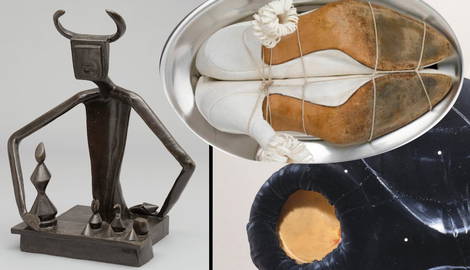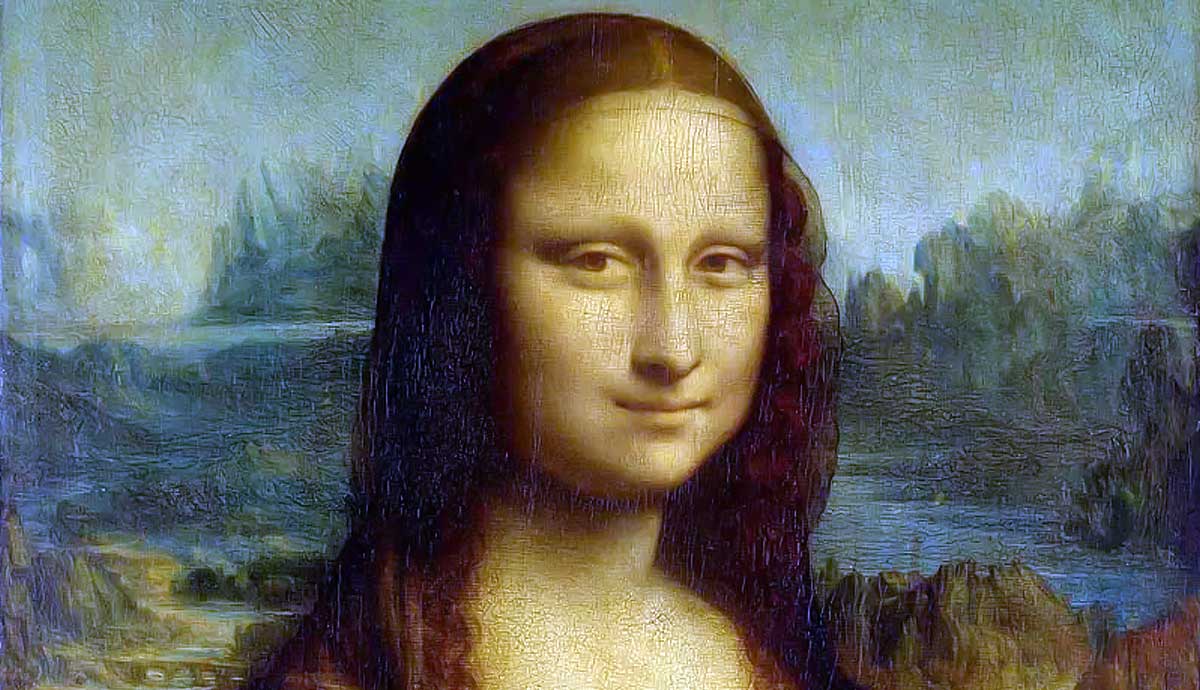
Surrealism stands as one of the most influential art movements in Western history, and its impact extends into the realm of sculpture. Surrealist sculptors made diverse pieces that vividly embodied the philosophy of the movement. Continue reading to explore the works of numerous fascinating sculptors who were either surrealists or inspired by the surrealistic ethos. Here are 10 artists you should know.
Are There Any Surrealist Sculptors?

Officially founded by Andre Breton in 1925, the Surrealist movement grew from the limitations of Dada, influenced by interwar tensions and Sigmund Freud’s theory of psychoanalysis. Believing that the rational society brought upon by the Enlightenment failed, Surrealism aimed to explore unconscious desires, instincts, dreams, and the irrationality of the human psyche. It sought to be a revolutionary force, freeing society from the oppression of rational thought.
Surrealist art is largely associated with painting and collages. René Magritte’s apple heads and raining men are emblematic, as are the cinematic experimentations of films such as Luis Buñuel’s Un Chien Andalou (1926) or The Discreet Charm of the Bourgeoisie (1972). But a key aspect of the movement was its experimental blurring of barriers between techniques: painting, collage, theater, literature, and sculpture.
Though less celebrated than two-dimensional artworks of the movement, Surrealist sculpture has a rich history. Building on the possibilities opened by Rodin, many great surrealist artists like Man Ray, Valentine Hugo, and Max Ernst experimented with sculptural works. From major artists of the Surrealist movement’s golden age to young artists of today who are finding their poetic expression in the surrealist lexicon, surrealist sculptors always found new ways to expand the possibilities of the genre.
10. Méret Oppenheim

Swiss artist Méret Oppenheim was one of the essential artists of surrealism. Oppenheim came from a family of psychiatrists, making her one of the few surrealist artists with a true background in psychology. Her work was heavily inspired by Carl Jung and it touches upon the themes of sexuality, fetish, food, cannibalism, life, and death. She was a master of assemblage, repurposing (or “depurposing”) and juxtaposing everyday objects.
Her work often creates simultaneous feelings of seduction and repulsion, as seen in the 1936 sculpture Ma Gouvernante, where a pair of high-heeled shoes are trussed up like a chicken and served on a platter. Her most famous sculpture, the fur-lined cup and saucer Object – Breakfast in Fur (1936), an emblematic work of the surrealist movement, has a similar play on the senses. The piece gave Oppenheim international recognition, but the artist often felt it overshadowed the rest of her life-long production.
9. Dorothea Tanning

Dorothea Tanning was an American painter, printmaker, writer, and sculptor who produced art from the 1940s until nearly her death in 2012. Self-taught, Tanning was heavily influenced by Gothic and Romantic literature and by the Surrealist art that made its way to America in the 1940s. She was even married to Surrealist artist Max Ernst for 30 years.
Tanning’s sculpture is characterized by tactile, soft materials like fabric, thread, and foam. Speaking often to the depiction of the female body in art, Tanning explored the space between organic, living forms and ritualistic objects—between dreams, suggestive sensuality, fetishism, and catharsis. She described her soft sculptures as avatars, three-dimensional ones, of my two-dimensional painted universe in her 2001 book Between Lives.
The earliest of these sculptures is Pincushion to Serve as Fetish (1965). It features a shape reminiscent of a living creature encased in plush blue velvet, with an orifice on one end and pins stuck to its body. The pins connect and blur the nature of a pincushion and a shamanistic ritual, as elements often used in both.
8. Max Ernst

Born in 1891 in Germany, Max Ernst is an emblematic name of both Dada and Surrealism. He was married to several important figures of the art world, including Peggy Guggenheim and Dorothea Tanning. Though he is mostly known for his paintings and collages, and for being the inventor of frottage and grattage (techniques of rubbing paint or pencil to reveal textures beneath canvas), Ernst was prolific in a number of artistic fields.
Max Ernst’s sculpture is greatly influenced by many types of African art and totems. He worked closely with Alberto Giacometti in his early sculptures and favored materials like iron, stone, and bronze. Ernst created anthropomorphic, quasi-mythological figures. Often with humor, he explored relations of power, humanity, and society.
In his 1944 work The King Playing with the Queen, Ernst depicted a chess game, which he loved and often included in his art. A large horned king stands above a chessboard alongside a conical queen. The work touches on themes of strategy and hierarchy. It has been interpreted as a piece that refers to World War II, gender dynamics, or even his wife, Dorothea Tanning.
7. Alberto Giacometti

Alberto Giacometti was a Swiss artist and a key figure in surrealist sculpture despite his short association with the group. The World Wars impacted Giacometti and his work greatly. His art deals with isolation, trauma, sexuality, anxiety, desire and danger, life and death. Giacometti reportedly felt much anxiety regarding his artistic output, which cyclically affected his work.
He was heavily influenced by Etruscan and Egyptian art, particularly in his early works. His surrealist phase is characterized by abstract figures, like his Gazing Head (1928) which enchanted the Surrealists of the time. Giacometti’s delicate architectural sculptures that seemed to invite interaction were exciting and groundbreaking. Hour of the Traces (1932) is one such architectural work, a fragile structure that implies unsteady balance and an existential quality.
6. Joseph Cornell

Joseph Cornell was one of the great assemblage masters in art history. Painfully shy, he was the caretaker of his mother and disabled brother. Suffering from anxiety in his youth, Cornell never traveled beyond his home state of New York. Cornell was a self-taught artist and designer who achieved international success and left a mark on the Surrealist movement. Inspired by Victorian bric-à-brac and a frequenter of thrift stores and bookstores, his sculptures became works of unexpected juxtaposition. He made dreamlike worlds in collections of everyday trinkets.
Cornell did not enjoy the violent and erotic themes of Surrealism. Instead, his sculptures, most famously his memory and shadow boxes, deal with the essence of dreams, nostalgia, theater, and playful fantasy. Taglioni’s Jewel Casket (1940) is the first of many of his boxes dedicated to ballerinas he admired. In honor of Marie Taglioni, the box resembles a jewelry box filled with imitation ice cubes, referencing Taglioni’s performance on a snowy road. The tactility and interactivity of the box, from the velvet lining and the hidden compartments beneath the ice cubes, heighten the sense of whimsy and intimacy in the sculpture.
5. Meyongbeom Kim

Though the period of high activity in the surrealist movement went from the 1920s to the 1960s, its influence is still present in contemporary art. Korean sculptor Kim Myeongbeom is a contemporary artist whose sculptures play with surrealist poetics, exploring the relationship between nature and artificiality. The absurdist, airy, poetic sculptures of Myeongbeom juxtapose everyday spaces and objects with natural, organic beings.
4. Penny Slinger

American-British artist Penny Slinger is a multimedia master who works crisscrossing the boundaries of photography, film, and sculpture. Her surrealist influences came early when she wrote a thesis on Max Ernst’s collage books. Slinger’s work has been called feminist Surrealism, exploring and questioning notions of femininity, sense of self, body, female sensuality, and representation of gender in art. Her 1970s sculpture series Doll Houses plays with the concept of the children’s toy as a key to the inner workings of the unconscious mind.
3. Nancy Fouts

Nancy Fouts was often described as a modern-day Surrealist. Working from the 1980s till her death in 2019, Fouts explored the inherent bizarre qualities of life in provocative, playful, sometimes darkly humorous ways. She was attracted to blending opposite objects in absurd and ironic ways, creating visual gags and wordplay in her titles, such as Electric Rocking Chair (2012), or Sewing Machine Record Player (2011). Fouts also worked in the fashion world as a designer and prop-maker.
2. Alex Chinneck

British sculptor Alex Chinneck specializes in urban Surrealism, of the particularly playful kind. Blending Surrealism and architecture on a large scale, Chinneck creates floating houses, cracked walls, broken buildings, and other illusions, installing them side by side with regular constructions. Planned and built for public spaces, Chinneck’s work transforms the ordinary day-to-day streets into extraordinary, playful experiences. In his 2014 work Take My Lighting but Don’t Steal My Thunder, Chinneck created the illusion of a building floating mid-air in London, half of its walls and columns broken in the middle, side-by-side with regular edifices.
1. Hugh Hayden

Young American sculptor Hugh Hayden originally studied architecture before he transitioned to contemporary art. Creating something like an anti-architecture of American society, Hayden’s sculptures are a surreal blend of minimalist furniture and hostile organic forms. His work is populated by Surrealism-inspired objects like tables and chairs covered in spikes and thorns, kitchen utensils branded in African masks, and school desks sprouting dried branches.
With a special emphasis on the material of his sculptures, Hayden works with steel, raw wood, and fallen trees. The artist aims to question the inequality of American society, educational precariousness, cultural oppression, and the myth of the American Dream. He particularly focuses on how these things affect the Black communities in America.










